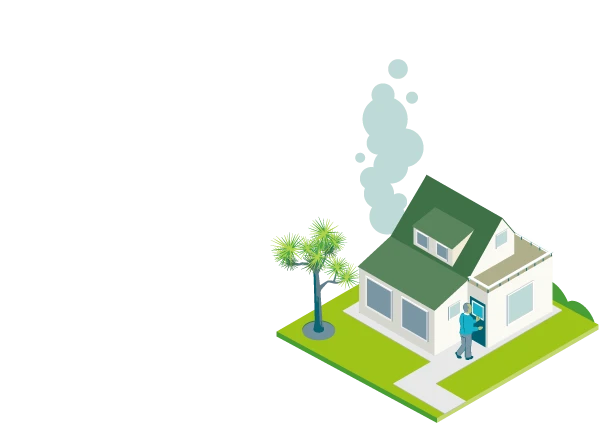Landlords must provide a clean and habitable property. Tenants must not use the rental property for an unlawful purpose. This includes smoking or manufacturing meth.
If landlords rent out contaminated properties, they may be breaching their obligations under the Residential Tenancies Act 1986. They may also be breaching other legislation such as the Building Act 2004 and the Health Act 1956.
The Residential Tenancies Amendment Act 2019 allows for regulations to be developed to set out:
- maximum acceptable level for meth contamination
- processes for testing
- decontamination of rental properties.
Until these regulations are developed, landlords and tenants must continue to follow the current information, outlined below.
Residential Tenancies Amendment Act 2019
Tenants must not use or manufacture meth
Using, possessing, selling and manufacturing meth are offences under the Misuse of Drugs Act 1975. Tenants who smoke, sell or manufacture meth in a rental property are using the property for an unlawful purpose. This is a breach of the Residential Tenancies Act.
Tenants who cause meth contamination are also breaching their obligation to not intentionally or carelessly damage the property. In most cases, tenants will be found liable for damage from meth contamination caused by a tenant or their guests.
The Tenancy Tribunal may order tenants who have used a rental property for an unlawful purpose to pay a penalty of up to $1,000.
Meth testing
On 27 August 2019, landlords can test for meth contamination during a tenancy, but they need to provide the correct notice before entering the property.
More information on providing the correct notice for inspections
At the start of a tenancy, landlords may include additional clauses related to meth testing in the tenancy agreement. Any additional clauses must comply with the Residential Tenancies Act.
Landlords may be able to better support a claim to recover the cost of meth testing and decontamination of meth if:
- at the beginning of the tenancy, the property was tested and shows no trace of meth or meth contamination
- additional clauses related to meth testing and decontamination cost are included in the tenancy agreement and agreed upon by the tenants, and
- a meth testing result during or after the tenancy indicates a higher than acceptable level for meth contamination.
Testing and decontamination of methamphetamine-contaminated properties — Standards New Zealand
Adding conditions to the tenancy agreement
What do I do if I suspect or find a meth lab?
If you think a property is being used for meth use, manufacture, or sale, contact the Police and your local Council.
More information about meth and the law, including important safety steps — NZ Police
New Zealand methamphetamine standard
The Residential Tenancies Act does not state what level of meth contamination is acceptable for health reasons in a rental property. There are 2 sources of information which have different views about what level of contamination creates a health risk. Both of these can be used as guidance to assist landlords and tenants.
The New Zealand Standard
NZS 8510:2017 Testing and Decontamination of Methamphetamine Contaminated Properties, provides industry guidance on good practice methods in the testing and clean-up of meth contamination in houses. The standard considers a house to be contaminated if meth is present at levels higher than 1.5 µg/100 cm2. This compares to a maximum health intervention level of 0.5 µg/100 cm2 in Australia, and 0.1 µg/100 cm2 in most states in the USA. The testing needs to be done according to the methods in the standard.
Download the standard (Standards New Zealand)
Report from Prime Minister’s Chief Science Advisor
The previous Prime Minister’s Chief Science Advisor, Professor Sir Peter Gluckman, released a report on the health effects of meth residue in residential properties — Methamphetamine contamination in residential properties: Exposures, risk levels, and interpretation of standards (the CSA report). The report suggested that exposure to meth at levels below 15 µg/100 cm2 would be unlikely to cause any adverse effects.
Tenancy Tribunal
Before deciding whether to take a meth-related claim to the Tenancy Tribunal, you should consider all available information. This includes:
- the New Zealand Standard
- the Chief Science Advisor's report
- Tribunal decisions – recent decisions allow a landlord to see how the Tribunal considers contamination levels.
You should also consider:
- when the testing and decontamination took place
- what evidence there is of methamphetamine manufacture or use in the premises
- how to satisfy the Tribunal the premises was not contaminated before the tenancy started
We also encourage you to seek independent legal advice and speak to your insurance company.
Tenancy Tribunal decisions — Ministry of Justice website
Last updated: 04 July 2023

